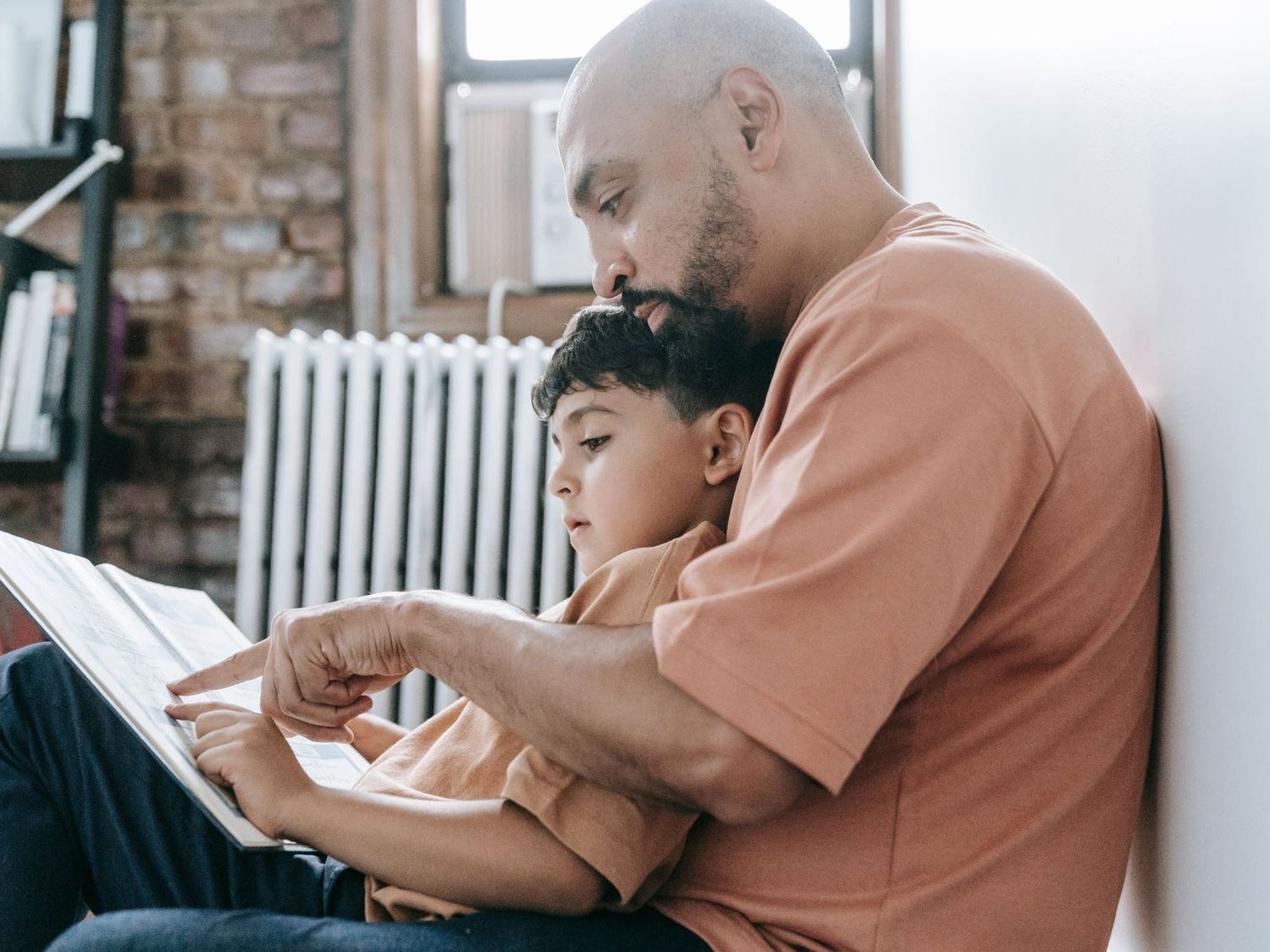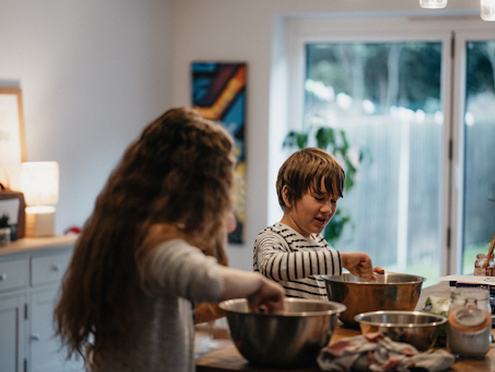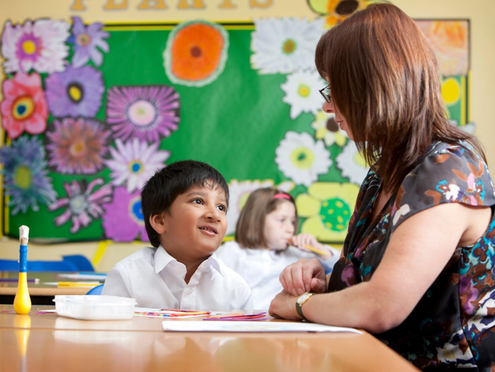Definitions and examples of common grammar skills
As a parent, you may want to familiarise yourself with some of the grammar skills your child is encountering, from fronted adverbials to ellipses to homophones.
We've identified some of the most common grammatical terms parents need to know for their children's education, and have listed them here as a grammar glossary alongside definitions and examples.
Grammar Glossary
- Adjective - A word used to describe a noun.
- red coat, happy dog
- Adverb - Describes how, when, where or why something is done. Some might say it "modifies a verb".
- Elina waited patiently for her coat; Francis ran quickly through the trees.
- Antonym - Two words that have an opposite meaning; opposite of synonym
- High and low
- Apostrophe – a punctuation mark used to show either:
- possession - when an item is owned by something or someone (it was Tim’s book).
- contraction – when two words are blended into a single word and removed letters are replaced by an apostrophe (don't instead of do not).
- Clause – a type of phrase (sometimes a full sentence) that contains a subject and a verb. A sentence may contain multiple clauses (it was sunny; there was no sign of the forecast rain). There are different types of clauses:
- independent clause – a clause that can make up a complete sentence by itself (young children lose their temper easily).
- subordinate clause – a clause that’s attached to a main clause that doesn't make sense on its own (picking up her fork, Rosie tucked in to a delicious breakfast).
- relative clause – a type of subordinate clause that modifies a noun (there’s the girl who forgot her homework).
- Colon – a punctuation mark that introduces a list (Mum gave me a shopping list: eggs, bacon and flour) or separates two linked clauses when the second explains the first (I’m very excited: I start university soon).
- Comma – a punctuation mark that separates items in a list (To bake a cake, you need eggs, butter and flour) or indicates pauses in a sentence where clauses are separated (At midday, the sun is a big, glowing ball in the sky).
- Conjunction – links two words or phrases together. There are two main types:
- coordinating conjunctions link two words or phrases together as an equal pair (I like apples and bananas; it’s cloudy but it’s warm)
- subordinating conjunctions introduce a subordinate clause (I can’t go to school because I’m poorly; everyone watches when he plays tennis)
- Determiner – a word that introduces a noun. It can specify a noun as known (we welcomed the new teacher) or unknown (we welcomed a new teacher; we saw some dogs in the park). Types of determiners are:
- articles (the, a or an)
- demonstratives (this, those)
- possessives (my, your and their)
- quantifiers (some, every)
- Direct speech – when exact words are reproduced in speech marks ("Raza, you've forgotten your lunch," said Aunt Kyra).
- Ellipsis – three dots in a row; designed to increase tension, show an unfinished thought or show that part of the text has been omitted.
- And the winner of the competition is...
- Exclamation mark – a punctuation mark used at the end of a sentence that shows an exclamation, interjection or statement sentence.
- Look out!
- Full stop – a punctuation mark used to show a sentence has ended.
- It's late. I'm going to bed.
- Fronted adverbial – words at the start of a sentence that describe the action that follows.
- Bravely, the girl marched on.
- Homophone – two different words that sound exactly the same when pronounced. They can be spelled differently (here; hear) or the same (book a holiday; read a book).
- Indirect speech – when the essence of what someone has said is reported but not necessarily the actual words.
- Raza's aunt said he'd forgotten his lunch.
- Noun – a person, place or thing. There are different types of nouns:
- common noun – a generic name for something, not capitalised unless it starts a sentence or appears in a title (girl; month)
- proper noun – a specific name for something, always capitalised (Lily; September)
- abstract noun – a feeling or concept you can’t touch or see (beauty; danger)
- Object – the thing or person in a sentence that’s involved in an action, but doesn’t carry it out.
- The cyclist crashed into the wall.
- Subject – the thing or person carrying out the action
- The cyclist crashed into the wall.
- Parenthesis – a word, phrase or clause inserted into a sentence to add information that clarifies, indicated by brackets (like this!).
- I went to the cinema with Anthony (my oldest brother).
- I did my Bedrock homework (which was really fun) after school.
- Phrase – a small group of words that doesn’t include a verb (a rainy day). If either phrase were expanded to include a verb, it would become a clause (it was a rainy day).
- Plural – a plural noun means more than one and usually means a word has an ‘s’ or ‘es’ as a suffix (cats, foxes). Occasionally, the plural of a word uses an irregular approach (oxen, octopi).
- Prefix – letters that are added to the start of a root word to change its meaning (disappear; undo).
- Suffix – letters added to the end of a word to change or add to its meaning (teacher; volumise).
- Collectively, prefixes and suffixes are called affixes.
- Preposition – a word that links a noun/pronoun/noun phrase to another word in the sentence. It describes locations, directions or time.
- I won’t see my child until tonight; I’ll wave hello to her).
- Pronoun – takes the place of a noun. There are two main types:
- personal pronoun – a word which can be used instead of a person, place or thing – such as I, you, she, we, them (she likes cake; we live in Cardiff).
- possessive pronoun – shows ownership. Some can be used on their own (that’s mine; this is his) while others must be used with a noun (my pen; their house).
- Root word – a basic word that can stand alone. Its meaning can be changed by adding a prefix or suffix (unfairness, played).
- Semicolon – a punctuation mark used to separate two independent clauses that are closely related (Ms Harrison forgot her umbrella; by the time she got to work, she was soaked!).
- Sentence – a group of words connected to each other that represent a complete thought. It begins with a capital letter and ends with a full stop, question mark or exclamation mark. Sentences can be a:
- statement – ends with a full stop (You need to do your homework tonight.)
- command – ends with a full stop or exclamation mark (Do your homework now!)
- question – ends with a question mark (Have you done your homework yet?)
- exclamation – ends with an exclamation mark (Well done for doing your homework so quickly!)
- These are all examples of sentences with one clause - sentences can contain one or many clauses!
- Standard English – the form of vocabulary and sentence structure used in schools and in written communication.
- Non-standard English, which includes slang and non-standard spellings such as ‘gonna’ for ‘going to’ or ‘cos’ for ‘because’, is sometimes used in informal contexts such as conversations between friends).
- Syllable – a part of a word that sounds like a beat.
- Dog has one syllable; Ap-ril has two; eld-er-ly has three, and so on.
- Synonym – two words that have the same/similar meaning. Opposite of antonym.
- Angry and cross; big and huge.
- Tense – the form of a verb that shows the time something happened or is going to happen. There are three main tenses:
- past tense (she walked the dog)
- present tense (she is walking the dog)
- future tense (she will walk the dog)
- Verb – often called a ‘doing word’, this names an action. There are different types of verbs:
- imperative verb – tells someone to do something, making the sentence an order or command (stop at the red light; do your homework).
- irregular verb – usually, verbs end with the suffix 'ing' for present and 'ed' for past, but irregular verbs do not (The children swam to the shore; the soldier wrote his wife a letter).
- modal verb – affects or changes other verbs in a sentence. It can show: obligation (you must do your homework); possibility/certainty (you may do your homework when we get home); ability (you can do your homework quickly).
To find out more about how students are taught grammar in school, find our grammar guide for parents.
How can Bedrock Grammar help my child improve their literacy?
Bedrock Grammar is a research-driven, human-narrated grammar curriculum, full of engaging videos, over 80+ bespoke activities and diagnostic data on your child's progress.
If you're looking for an easy way to consolidate your child's grammar skills in a consistent, comprehensive and engaging way, look no further than Bedrock Grammar.





